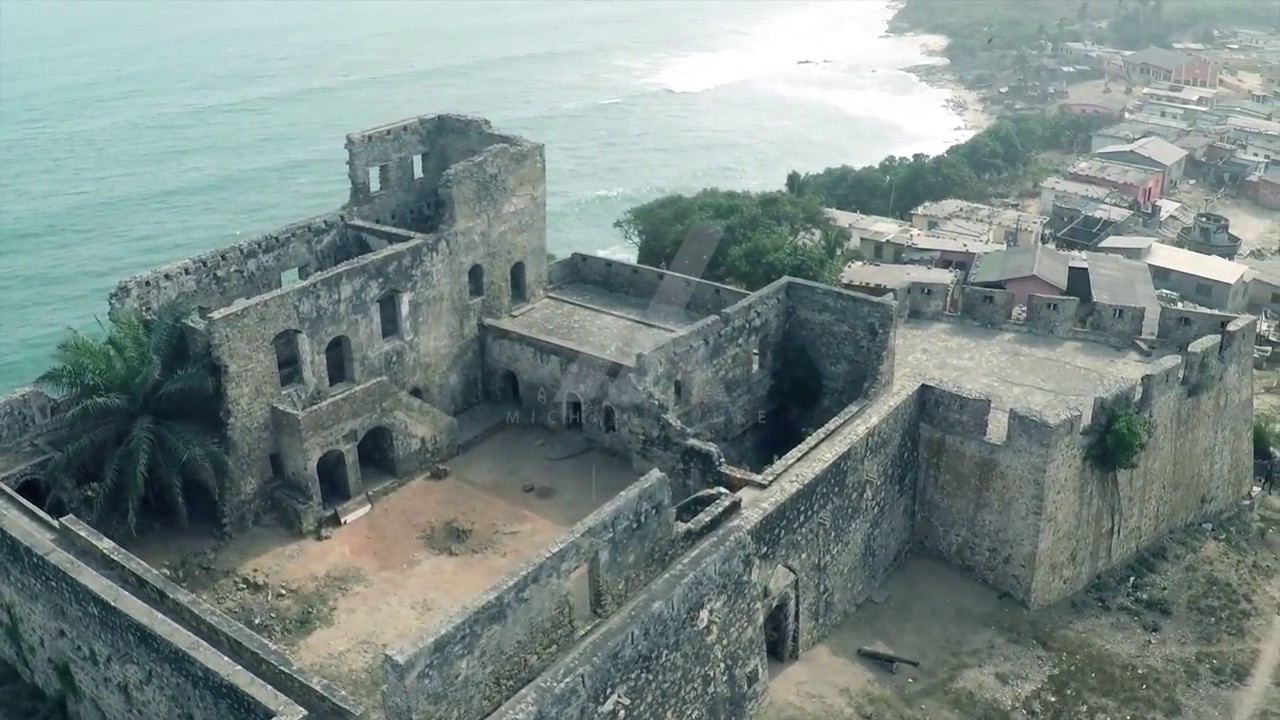A STEP BACK IN TIME INTO GHANA’S DARK PAST
Published on July 13, 2020 at 4:51 PM by Robert Ngwira
Along Ghana’s 500-kilometre coastline, you’ll find 30-odd surviving castles, forts and former trading posts that stand as a stark reminder of the country’s dark past. Formerly known as the Gold Coast because of its rich gold deposits, the coastline was the hub of West Africa’s mineral and slave trade era.
Built between 1482 and 1786, the stark heritage buildings remind visitors of what was the largest forced migration in history and the atrocities of the transatlantic slave trade. The castles and forts served as holding stations for slaves, where they were kept in inhumane conditions in dark, cramped dungeons before being shipped to the New World (the Americas and Caribbean).
Standing as silent witness to the tyranny of the slave traders, Ghana’s castles and fortified trading posts have been turned into museums. A guided tour takes you on a walk through the courtyards and dungeons and brings to life the heartbreaking experiences of the slaves. The tours are popular among African American tourists who visit Ghana to learn more about their heritage.
The castles and fortified trading posts were placed on Ghana’s coastline as a strategic link in the trade routes that were established by the Portuguese in the 15th century. For almost four centuries, the struggle between European trading powers for domination of the Gold Coast played out where the European buildings were seized, attacked, exchanged, sold and often abandoned over the years.
In the early 1500s, the castles were gradually converted to holding cells for slaves as the demand for human labour in the New World started to grow. The dark dungeons tell a tale of utter misery and despair up until the slave trade was abolished by colonial powers in the first half of the 1800s.
The 5 most significant castles and forts on Ghana’s beautiful Cape Coast are a good starting point if you’re visiting Ghana to explore this historic stretch of coastline.
Cape Coast Castle
Cape Coast Castle was built in 1653 for the Swedish Africa Company. It was originally used as a trading post for the gold and timber industries and later expanded by the Dutch and British to serve as an essential holding station for slaves bound for the New World.
Thousands of enslaved Africans passed through the notorious “Door of no return” at Cape Coast Castle. The door led slaves out of the dungeons and onto the ships setting off on the Middle Passage. The boat journeys could last several months and an estimated 15 percent of slaves died on board the ship before reaching the New World.
St George’s Castle
St George’s Castle (also known as Elmina Castle) is located in the quaint fishing town of Elmina, a 20-minute drive from Cape Coast Castle. The stark white-washed building was first used as a fortified trading post and then as a holding station for slaves.
The castle was built in 1482 by the Portuguese and taken over 150 years later by the Dutch, serving as the headquarters of the Dutch West India Company for two centuries until it was ceded to the British in 1872. It’s the oldest European structure in Ghana.
The Dutch made substantial changes to St George’s Castle, including adding a marketplace where slaves could be auctioned. Under the rule of the DWIC, an estimated 30 000 slaves passed through the castle’s ‘Door of no return”.
You might like: Best tours to South Africa.
Fort St Jago
Fort St Jago lies across the lagoon from St George’s Castle. Built on a hill with excellent views of the castle and the town of Elmina, the fort was originally built as a church dedicated to St Jago. It was also used as a gun-position by the Dutch to attack and overtake St George’s Castle from the Portuguese.
A permanent fort was built on the site years later that consisted of two landward bastions, two seaward bastions and buildings that housed soldiers. Over the centuries, Fort St Jago has been used as a slave holding station, prison, hospital and a resting house for sailors.
Ussher Fort
Ussher Fort is located on the coast of the capital city of Accra, a day’s march from Elmina. Formerly known as Fort Crèvecœur, it was built by the Dutch in 1649 as a simple factory and later enlarged by the Dutch West India Company. The fort was later transferred to the British in 1868 under the Anglo-Dutch Gold Coast Treaty (1867).
Ussher Fort is currently being restored with funds from the European Commission and UNESCO. The purpose is to convert it to a museum and International Documentation Centre.
Osu Castle
Formerly known as Christianborg Castle, Osu Castle has been the seat of government since the early 1920s. It’s now the official residence of the President of Ghana and is not open to the general public. Located in Osu in the capital city of Accra, the castle was originally built as a substantial fort by Denmark-Norway in the 1660s.
Osu Castle was strategically positioned between two forts; Fort Crèvecoeur which was controlled by the Dutch and Fort James by the British. Denmark-Norway used the castle as its headquarters for almost 200 years, with some interruptions. For much of that time, it served as the capital of the Gold Coast of Denmark-Norway.
Visit Moafrikatours.com for more info.
Subscribe to our Youtube Channel:



